In the vast landscape of literature, non-fiction military books stand out as windows into the profound experiences of soldiers, the strategies that shaped history, and the personal narratives that define the human cost of warfare.
Join us on a captivating exploration as we delve into the pages of 21 gripping non-fiction military books.
Each of these works provides a distinct perspective, offering profound insights into the intricacies and harsh realities of armed conflicts.
Take a literary journey with us as we navigate through the profound narratives that shed light on the multifaceted world of warfare.
Table of Contents
ToggleHistorical Perspectives
1. “Band of Brothers” by Stephen E. Ambrose
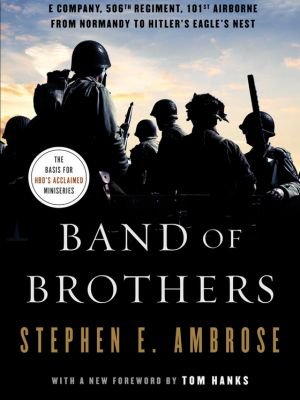
“Band of Brothers” by Stephen E. Ambrose provides readers with an intimate look into the lives of the men of Easy Company, 506th Parachute Infantry Regiment, 101st Airborne Division during World War II. Ambrose’s meticulous research and extensive interviews with the surviving members allow the narrative to unfold like a gripping novel. The book explores the camaraderie, sacrifice, and challenges faced by this extraordinary unit, from the initial training at Camp Toccoa to the pivotal moments of D-Day and beyond.
Key Themes:
Comradeship: Ambrose captures the profound bonds formed among the soldiers, illustrating how their unity was crucial to their survival in the face of adversity.
Leadership: The book delves into the leadership qualities exhibited by officers such as Richard Winters, portraying the impact of effective leadership on the success of military missions.
Historical Significance: Through the lens of Easy Company, readers gain a deep understanding of the larger events of World War II, including Operation Market Garden and the Battle of the Bulge.
2. “The Longest Day” by Cornelius Ryan
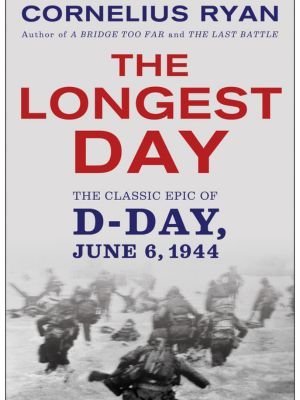
In “The Longest Day,” Cornelius Ryan meticulously reconstructs the monumental events of D-Day, the Allied invasion of Normandy on June 6, 1944. Ryan’s narrative skillfully weaves together the perspectives of various participants, from soldiers on the front lines to high-ranking officers and civilians, offering a comprehensive and immersive account of one of the most pivotal moments in history.
Key Themes:
Multifaceted Perspectives: Ryan’s use of firsthand accounts provides a panoramic view of D-Day, allowing readers to understand the invasion from various angles and experiences.
Tension and Drama: The book is infused with a sense of urgency and suspense, capturing the chaos and uncertainty of the largest amphibious assault in history.
Human Element: By emphasizing the personal stories of those involved, “The Longest Day” humanizes the historical event, making it accessible and relatable to readers.
Both “Band of Brothers” and “The Longest Day” stand as pillars in the genre of historical military literature, offering not just a factual retelling of events but a deeply human perspective on the challenges, triumphs, and sacrifices of those who participated in these defining moments of World War II.
Personal Narratives
3. “Once Upon a Time in Afghanistan” by Teri Stanley
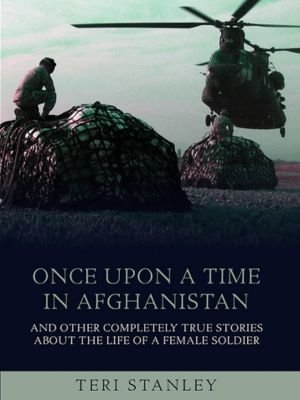
Introduction to Teri’s Military Experiences:
Teri’s “Once Upon a Time in Afghanistan” provides a unique perspective as she reflects on her over 20 years of service in the Army and Army Reserves.
Having deployed to Somalia, Saudi Arabia, Afghanistan, and Iraq, Teri brings a wealth of experiences that span diverse theaters of operation.
Deployment Stories and Reflections:
Teri shares compelling deployment stories, offering readers a glimpse into the challenges and triumphs she encountered during her tours. From the rugged landscapes of Afghanistan to the unpredictable environments of Iraq, Teri’s narratives provide a firsthand account of the dynamic and ever-changing nature of military deployments. Her reflections touch on the camaraderie forged in the crucible of service, the resilience required to navigate diverse cultures, and the profound impact these experiences have on personal growth and understanding.
“Once Upon a Time in Afghanistan” stands as a testament to the individual stories that collectively shape the broader narrative of military service, adding a unique voice to the rich tapestry of personal narratives within the genre.
4. “With the Old Breed” by Eugene B. Sledge

Eugene B. Sledge’s “With the Old Breed” is an unflinching account of his experiences as a marine in the Pacific Theater during World War II.
Sledge takes readers into the heart of the brutal battles on Peleliu and Okinawa, offering a raw and honest portrayal of the physical and psychological toll of war.
His narrative provides a deeply personal perspective on the challenges faced by frontline soldiers and the indomitable spirit that sustained them.
Key Themes:
Combat Realities: Sledge vividly describes the harsh conditions of battle, detailing the relentless fighting, mud-soaked trenches, and the constant threat of enemy fire.
Human Resilience: The book explores the resilience of the human spirit in the face of unimaginable adversity, highlighting the bonds formed among soldiers under the most challenging circumstances.
Post-War Reflections: Sledge reflects on the lasting impact of war on his psyche and the difficulty of readjusting to civilian life, providing insight into the long-term effects of combat trauma.
5. “American Sniper” by Chris Kyle

“American Sniper” by Chris Kyle is an unparalleled account of the experiences of U.S. Navy SEAL Chris Kyle, who held the record for the most career sniper kills in United States military history from 1999 to 2009. During this period, Kyle recorded over 150 confirmed kills, a staggering feat that earned him legendary status among his peers. The Pentagon officially confirmed more than 150 kills, surpassing the previous American record of 109. However, the total number remains astonishingly unverified, adding an aura of mystery to Kyle’s remarkable achievements.
Key Details:
Record-Breaking Sniper Kills: Kyle’s incredible marksmanship set a new standard in sniper history, with the Pentagon confirming his kills but leaving the total number shrouded in secrecy.
Fear among Insurgents: Iraqi insurgents were so intimidated by Kyle that they dubbed him al-Shaitan, meaning “the devil,” and placed a bounty on his head.
Protecting Fellow Soldiers: Kyle earned the respect and gratitude of SEALs, Marines, and U.S. Army soldiers for his deadly accuracy in protecting them from rooftops and stealth positions.
Legendary Status: Widely regarded as one of the greatest war memoirs, Kyle’s account of his battlefield experiences has earned him a lasting place in military history.
Chris Kyle’s journey from a native Texan with a background in saddle-bronc riding to a world-class sniper thrust onto the front lines of the War on Terror is nothing short of extraordinary. He excelled under fire and achieved a personal-record 2,100-yard kill shot outside Baghdad, demonstrating unparalleled skill and courage.
Additional Insights:
Personal Sacrifices: Kyle candidly discusses the personal toll of war, including being shot twice and the tragic loss of close friends.
Honoring Fellow Warriors: The book pays homage to the comrades who fought alongside Kyle, both on and off the battlefield.
Family Struggles: Through firsthand accounts from Kyle’s wife, Taya, readers gain insight into the strains of war on their marriage and children.
“American Sniper” is not just a thrilling eyewitness account of war; it’s a deeply personal narrative that delves into the complexities of combat, the bonds forged among warriors, and the impact of war on family life. Chris Kyle’s legacy endures, immortalized in this gripping memoir that only a man of his extraordinary experiences could tell.
“American Sniper” is not just a thrilling eyewitness account of war; it’s a deeply personal narrative that delves into the complexities of combat, the bonds forged among warriors, and the impact of war on family life. Chris Kyle’s legacy endures, immortalized in this gripping memoir that only a man of his extraordinary experiences could tell.
Strategic Insights
6. “On War” by Carl von Clausewitz

Carl von Clausewitz’s “On War” stands as a seminal work in military strategy and theory. Published posthumously, this classic treatise explores the nature of war, its inherent complexities, and the strategic considerations that shape military campaigns.
Clausewitz’s insights have become foundational in military education and are widely studied by scholars and practitioners alike.
Key Themes:
Nature of War: Clausewitz delves into the fundamental nature of war, emphasizing its unpredictable and dynamic character.
Fog of War: The concept of the “fog of war” is introduced, highlighting the uncertainties and challenges faced by military leaders in the midst of conflict.
Importance of Strategy: “On War” underscores the critical role of strategy in shaping the course of military engagements, emphasizing the need for adaptability and flexibility.
7. “Dereliction of Duty” by H.R. McMaster
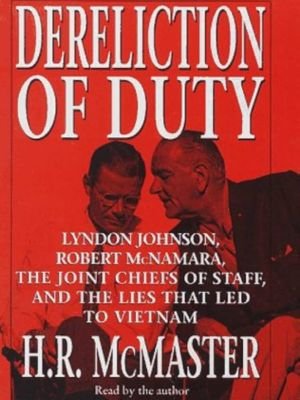
In “Dereliction of Duty,” H.R. McMaster provides a critical analysis of the decision-making processes that led to the United States’ deepening involvement in the Vietnam War. As a highly respected military historian and a serving Army officer, McMaster’s work dissects the shortcomings of military and political leadership during a critical juncture in American history.
Key Themes:
Vietnam War Decision-Making: McMaster scrutinizes the decision-making within the U.S. government and military, highlighting the failures that contributed to the escalation of the Vietnam War.
Civil-Military Relations: The book explores the strained relations between civilian leaders and military commanders, revealing the impact of these dynamics on strategic decision-making.
Lessons for Leadership: “Dereliction of Duty” serves as a cautionary tale, offering valuable lessons for contemporary military leaders about the importance of truth, integrity, and accountability in strategic planning.
Both “On War” and “Dereliction of Duty” contribute profound insights to the understanding of military strategy, each in its unique way. While Clausewitz provides timeless principles applicable to the nature of war, McMaster’s analysis offers a contemporary lens into the challenges of leadership and decision-making in the context of historical conflict. Together, these works serve as crucial references for military professionals, scholars, and anyone interested in comprehending the strategic intricacies of armed conflict.
Modern Warfare
8. “Black Hawk Down” by Mark Bowden
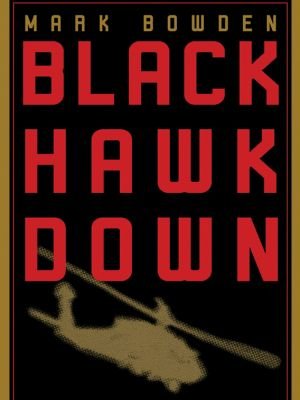
“Black Hawk Down” by Mark Bowden takes readers into the heart of one of the most intense modern military operations – the Battle of Mogadishu in 1993. Based on extensive research and interviews, Bowden provides a gripping account of the U.S. military’s attempt to capture a Somali warlord and the ensuing urban battle that resulted in unexpected challenges and tragedy.
Key Themes:
Urban Warfare: Bowden explores the complexities and challenges of urban warfare, emphasizing the difficulties faced by U.S. forces in navigating the crowded streets of Mogadishu.
Military Brotherhood: The book delves into the camaraderie and brotherhood among soldiers as they face adversity together, showcasing the resilience and loyalty that define military units.
Impact of Modern Technology: “Black Hawk Down” reflects on the impact of modern military technology and the unforeseen consequences that can arise in the midst of a high-stakes mission.
9. “The Fighters: Americans in Combat” by C.J. Chivers

In “The Fighters,” C.J. Chivers provides a comprehensive exploration of the experiences of American combatants in the post-9/11 era.
Drawing on extensive interviews and on-the-ground reporting, Chivers presents a mosaic of personal narratives, chronicling the lives of individuals who served in Iraq and Afghanistan.
The book goes beyond the battlefield, delving into the complexities of modern warfare and its profound impact on those who bear its burdens.
Key Themes:
Individual Stories: Chivers weaves together individual stories, offering readers a nuanced understanding of the diverse experiences of soldiers in the contemporary military landscape.
Resilience and Sacrifice: “The Fighters” explores themes of resilience and sacrifice, highlighting the personal costs borne by those who serve in the face of prolonged conflict.
Human Cost of War: The book emphasizes the human cost of war, not only on the battlefield but in the aftermath, as veterans grapple with the physical and psychological toll of their service.
“Black Hawk Down” and “The Fighters” provide readers with intimate insights into the realities of modern warfare. While the former focuses on a specific, intense battle, the latter broadens the scope, capturing the broader spectrum of experiences and challenges faced by American servicemen and servicewomen in the contemporary era. Together, they paint a vivid picture of the complexities and sacrifices inherent in modern military engagements.
Intelligence and Espionage
10. “The Billion Dollar Spy” by David E. Hoffman

“The Billion Dollar Spy” by David E. Hoffman unveils the riveting true story of Adolf Tolkachev, a Soviet engineer who became a critical CIA informant during the height of the Cold War. Hoffman’s non-fiction narrative provides an in-depth exploration of the clandestine world of espionage, delivering a compelling account of a high-stakes intelligence operation that played a pivotal role in shaping the geopolitical landscape.
Key Themes:
Cold War Espionage: Hoffman takes readers into the heart of Cold War-era intelligence, shedding light on the intense rivalry between the United States and the Soviet Union and the covert methods employed to gather crucial information.
Individual Sacrifice: The book chronicles the personal sacrifices and risks undertaken by Adolf Tolkachev, offering a nuanced portrayal of the challenges faced by individuals involved in espionage for the greater good.
Technological Espionage: “The Billion Dollar Spy” explores the technological dimensions of espionage, showcasing how Tolkachev’s intelligence contributions provided the U.S. with valuable insights into Soviet military capabilities.
Global Implications: The narrative unfolds against the backdrop of global political tensions, illustrating how the information gleaned from Tolkachev’s efforts had far-reaching implications on international relations.
Hoffman’s meticulous research and compelling storytelling elevate “The Billion Dollar Spy” beyond a mere historical account, making it a captivating exploration of the intricate and high-stakes world of intelligence gathering. The book not only provides insights into the geopolitical chess game of the Cold War but also pays homage to the unsung heroes whose actions behind the scenes had profound consequences on the course of history.
11. “Legacy of Ashes” by Tim Weiner
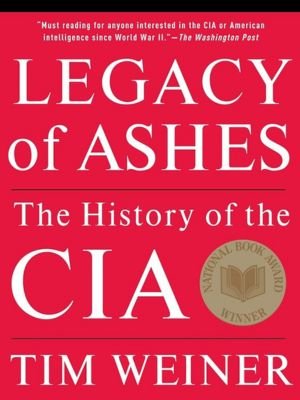
“Legacy of Ashes” by Tim Weiner offers a comprehensive and critical examination of the Central Intelligence Agency (CIA) from its inception to the contemporary era. Drawing on extensive research and interviews, Weiner explores the successes and failures of the CIA, shedding light on the clandestine world of intelligence gathering and covert operations.
Key Themes:
History of the CIA: Weiner provides a detailed historical account of the CIA, from its early days during the Cold War to its role in modern conflicts and counterterrorism efforts.
Successes and Failures: The book critically evaluates both the successes and failures of the CIA, offering insights into the impact of its actions on global events.
Challenges of Intelligence: “Legacy of Ashes” highlights the inherent challenges and contradictions within intelligence agencies, emphasizing the difficulty of balancing secrecy with accountability.
Unconventional Warfare
12. “The Art of War” by Sun Tzu
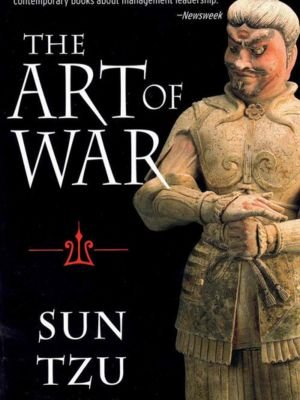
“The Art of War” by Sun Tzu stands as a timeless masterpiece on military strategy and tactics. Although ancient, Sun Tzu’s principles continue to resonate in the realm of unconventional warfare and conflict resolution. This classic text provides profound insights into the art of strategy, leadership, and the nuances of unconventional warfare, making it an essential read for military leaders and strategists across generations.
Key Themes:
Strategic Wisdom: Sun Tzu’s teachings emphasize the importance of strategic wisdom, adaptability, and understanding the nature of conflict.
Deception and Maneuvering: The book explores the use of deception and maneuvering as essential components of successful unconventional warfare, offering valuable lessons for unconventional scenarios.
Leadership: Sun Tzu delves into the qualities of effective leadership, stressing the significance of knowing oneself and one’s enemy to achieve victory without unnecessary conflict.
13. “One Bullet Away” by Nathaniel Fick
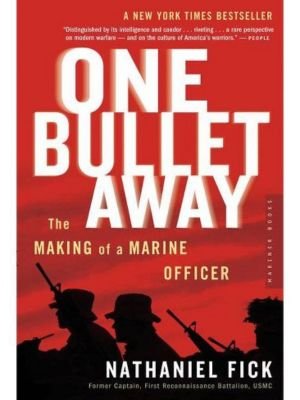
“One Bullet Away” by Nathaniel Fick provides a firsthand account of modern unconventional warfare from the perspective of a Marine officer during the early 2000s, specifically in Iraq and Afghanistan. Fick’s memoir offers a poignant and reflective exploration of the challenges, ethical dilemmas, and strategic complexities faced by military leaders in the unconventional battlefields of the 21st century.
Key Themes:
Complexities of Modern Warfare: Fick’s narrative captures the complexities of modern unconventional warfare, highlighting the blurred lines between military and civilian interactions.
Counterinsurgency Operations: The book provides insights into the intricacies of counterinsurgency operations, shedding light on the challenges of winning the hearts and minds of local populations.
Personal Reflections: Fick reflects on his experiences and the moral dilemmas encountered, offering readers a glimpse into the psychological toll of unconventional warfare on military leaders.
“One Bullet Away” complements the ancient wisdom of “The Art of War” by bridging the gap between timeless strategic principles and the contemporary realities of unconventional warfare. Together, these works provide a comprehensive perspective on the art and challenges of unconventional military strategies, spanning centuries of military thought and practice.
Behind Enemy Lines
14. “Code Girls” by Liza Mundy
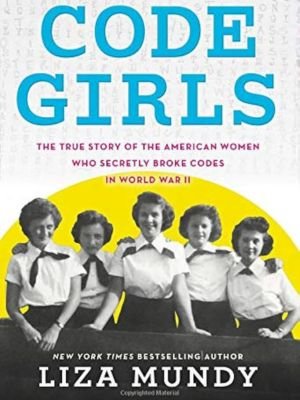
“Code Girls” by Liza Mundy unveils the untold story of the women who served as codebreakers during World War II. Focused on the American female cryptanalysts, this non-fiction work provides a compelling narrative of their critical role in breaking enemy codes. Mundy’s detailed research brings to light the dedication, intelligence, and bravery of these women who operated behind enemy lines, contributing significantly to the Allied victory.
Key Themes:
Cryptanalysis and Codebreaking: Mundy delves into the world of cryptanalysis, showcasing the vital role of the codebreakers in deciphering enemy communications and gaining intelligence.
Women in War: The book highlights the often-overlooked contributions of women during wartime, emphasizing their resilience and determination in the face of challenges.
Secrecy and Espionage: “Code Girls” explores the atmosphere of secrecy and espionage, shedding light on the intense and covert nature of the codebreaking operations conducted behind enemy lines.
15. “The Great Escape” by Paul Brickhill
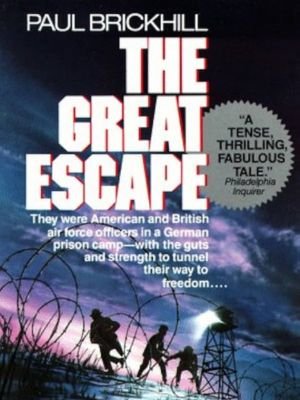
“The Great Escape” by Paul Brickhill recounts the true story of a daring escape attempt by Allied prisoners of war from a German POW camp during World War II.
The book provides a gripping account of the meticulous planning, audacious execution, and the subsequent challenges faced by the escapees.
Brickhill’s narrative captures the spirit of camaraderie and determination that characterized this bold attempt to break free behind enemy lines.
Key Themes:
Prisoners of War: Brickhill details the experiences of Allied prisoners of war, exploring their resilience and the bonds formed in captivity.
Escape Planning: The book meticulously describes the planning and execution of the escape attempt, offering insights into the resourcefulness and ingenuity of the prisoners.
Camaraderie and Sacrifice: “The Great Escape” pays tribute to the camaraderie among the escapees and the sacrifices made in pursuit of freedom, even in the face of immense challenges.
Additional Personal Accounts
16. “Helmet for My Pillow” by Robert Leckie
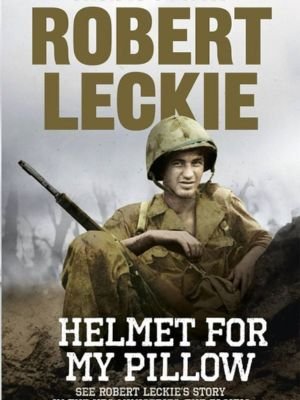
“Helmet for My Pillow” by Robert Leckie offers a deeply personal and vivid account of his experiences as a Marine during World War II, particularly in the Pacific theater. Serving in battles such as Guadalcanal and Peleliu, Leckie’s memoir provides readers with an unfiltered glimpse into the challenges, camaraderie, and horrors of war. His narrative skillfully captures the emotional toll of combat and the resilience required to endure the harsh conditions of island warfare.
Key Themes:
Pacific Theater Campaigns: Leckie recounts the intense and grueling battles fought by Marines in the Pacific, offering a firsthand perspective on the unique challenges of island-hopping campaigns.
Comradeship and Bonding: The memoir highlights the bonds formed among soldiers, emphasizing the importance of camaraderie as a source of strength during the darkest moments of war.
Psychological Impact: Leckie’s narrative delves into the psychological impact of combat, exploring the toll it takes on the mental and emotional well-being of those who experience the brutality of war.
17. “Lone Survivor” by Marcus Luttrell
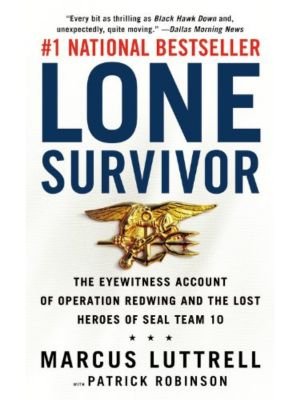
“Lone Survivor” by Marcus Luttrell recounts the harrowing true story of Operation Red Wings, a Navy SEAL mission in Afghanistan that went tragically awry. Luttrell, the lone survivor of the mission, provides a gripping and emotional narrative of the intense firefight, the sacrifices of his teammates, and his remarkable survival against overwhelming odds. The book not only details the military operation but also reflects on the bonds forged among the members of the U.S. Navy SEALs.
Key Themes:
Operation Red Wings: Luttrell describes the ill-fated mission in the mountains of Afghanistan, shedding light on the complexities of special operations and the unforeseen challenges faced by the SEAL team.
Courage and Sacrifice: “Lone Survivor” pays tribute to the courage and sacrifice of Luttrell’s fellow SEALs, illustrating the profound sense of duty that drives elite military units.
Survival and Resilience: The book explores Luttrell’s extraordinary journey of survival, highlighting his physical and mental resilience as he navigated treacherous terrain and faced enemy forces alone.
“Helmet for My Pillow” and “Lone Survivor” offer readers two distinct perspectives on the personal experiences of individuals serving in different theaters of conflict. Leckie’s account provides a World War II perspective, while Luttrell’s narrative brings the challenges of modern warfare to the forefront. Together, these personal accounts contribute to a nuanced understanding of the human experience in the crucible of war.
Vietnam War
18. “We Were Soldiers Once… and Young” by Harold G. Moore and Joseph L. Galloway
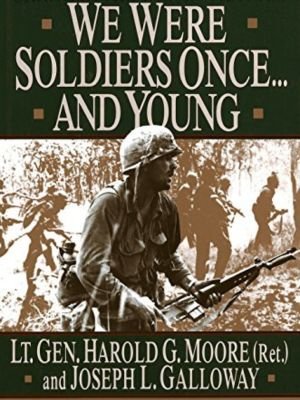
“We Were Soldiers Once… and Young” by Harold G. Moore and Joseph L. Galloway provides a gripping and poignant account of the Battle of Ia Drang during the early stages of the Vietnam War. Based on firsthand experiences, the book recounts the harrowing engagement between American forces and the North Vietnamese Army, offering a powerful narrative of courage, sacrifice, and the human toll of war.
Key Themes:
Battle of Ia Drang: Moore and Galloway vividly describe the Battle of Ia Drang, the first major engagement between the U.S. Army and the People’s Army of Vietnam (PAVN), providing a detailed and immersive portrayal of the conflict.
Leadership and Valor: The book highlights the leadership and valor displayed by both American and Vietnamese forces, emphasizing the courage of soldiers on both sides of the battlefield.
Human Cost of War: “We Were Soldiers Once… and Young” explores the personal stories of those involved in the battle, capturing the human cost of war and the lasting impact on soldiers and their families.
Harold G. Moore and Joseph L. Galloway’s collaboration brings forth a powerful narrative that goes beyond the tactical aspects of the Battle of Ia Drang. Their work delves into the complexities of the Vietnam War, offering a deeply human perspective on the challenges faced by soldiers on the front lines and the profound consequences of this pivotal conflict.
Psychological Effects of War
19. “On Killing” by Dave Grossman
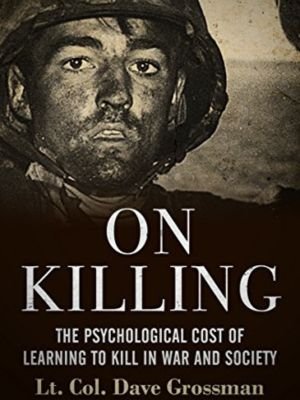
“On Killing” by Dave Grossman delves into the psychological dimensions of warfare, exploring the complex and often uncomfortable truths about the act of killing in combat. Drawing on historical, psychological, and military sources, Grossman examines the factors that influence an individual’s willingness—or unwillingness—to take another human life on the battlefield.
Key Themes:
Psychological Impact: Grossman delves into the psychological effects of killing, addressing the emotional and mental toll it takes on soldiers and the broader impact on society.
The Resistance to Killing: The book explores the natural resistance that many individuals have to killing, shedding light on the methods used to overcome this resistance in military training.
Post-Traumatic Stress Disorder (PTSD): Grossman discusses the connection between the act of killing and the development of post-traumatic stress disorder, offering insights into the long-term psychological consequences for veterans.
“On Killing” goes beyond traditional military narratives, providing a thought-provoking analysis of the profound psychological effects of war. Grossman’s work invites readers to reflect on the human cost of armed conflict and the challenges faced by those who must grapple with the psychological aftermath of participating in combat.
Afghanistan and Terrorism
20. “Ghost Wars” by Steve Coll
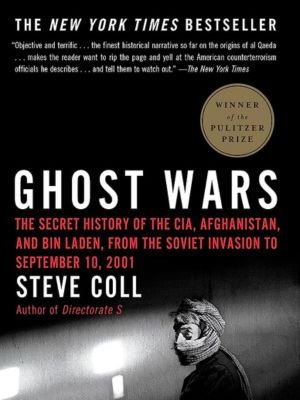
“Ghost Wars” by Steve Coll provides a comprehensive account of the covert and overt operations conducted by various intelligence agencies leading up to the 9/11 attacks and the subsequent U.S. intervention in Afghanistan. Coll’s meticulously researched narrative explores the complexities of the Afghan conflict, the role of intelligence agencies, and the geopolitical landscape that shaped the region during a critical period.
Key Themes:
Pre-9/11 Intelligence: Coll delves into the intelligence activities that preceded the 9/11 attacks, shedding light on the challenges faced by intelligence agencies and the missed opportunities to prevent the catastrophic event.
U.S. Intervention in Afghanistan: The book provides a detailed examination of the U.S. military and intelligence involvement in Afghanistan, tracing the evolution of the conflict from the early stages to the post-9/11 era.
Geopolitical Dynamics: “Ghost Wars” explores the intricate geopolitical dynamics that influenced decision-making in Washington and the region, offering insights into the complexities of U.S. foreign policy.
Space Exploration
21. “The Right Stuff” by Tom Wolfe

“The Right Stuff” by Tom Wolfe takes readers on a captivating journey into the world of space exploration, focusing on the test pilots and astronauts involved in the early years of the U.S. space program. Wolfe’s narrative explores the courage, ambition, and competitive spirit that defined the individuals striving to push the boundaries of human achievement during the race to the stars.
Key Themes:
Test Pilot Culture: Wolfe delves into the unique culture of test pilots, portraying their daring feats and the intense competition to prove one’s “right stuff” — the combination of skill, courage, and character necessary for space exploration.
Mercury Seven Astronauts: The book provides a detailed and intimate look at the Mercury Seven astronauts, the first group of American astronauts selected for space missions, revealing the personal and professional challenges they faced.
Human Element of Space Exploration: “The Right Stuff” goes beyond the technical aspects of space travel, emphasizing the human element and the psychological complexities of those who ventured into the unknown.
Wolfe’s masterful storytelling not only captures the historical events of the space race but also delves into the psychology of the individuals who donned the spacesuits, offering a captivating narrative that continues to resonate with readers interested in the triumphs and tribulations of space exploration.
Conclusion
As we navigate through these gripping narratives, we find ourselves immersed in the realities of war, strategy, sacrifice, and the indomitable human spirit. These 21 non-fiction military books offer not just stories, but profound insights into the intricacies of armed conflict. We encourage you to delve into these pages, as each book contributes to a richer understanding of the complexities and realities that define military history. Join us in this exploration and share your thoughts on these remarkable works. The journey awaits.


